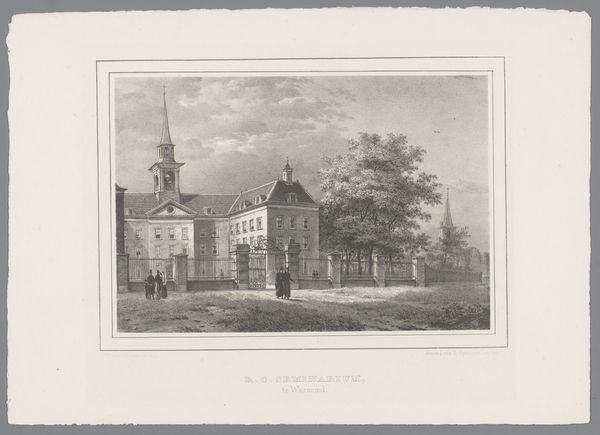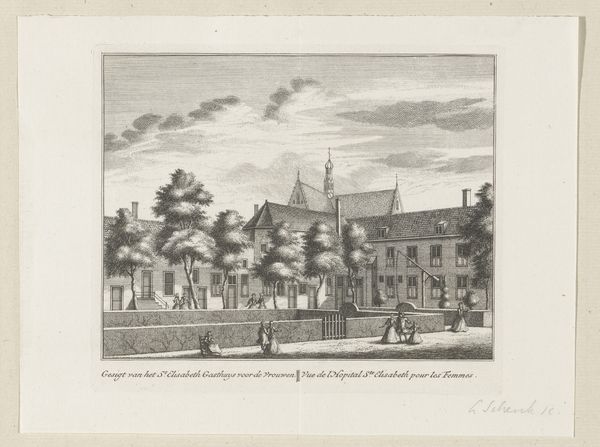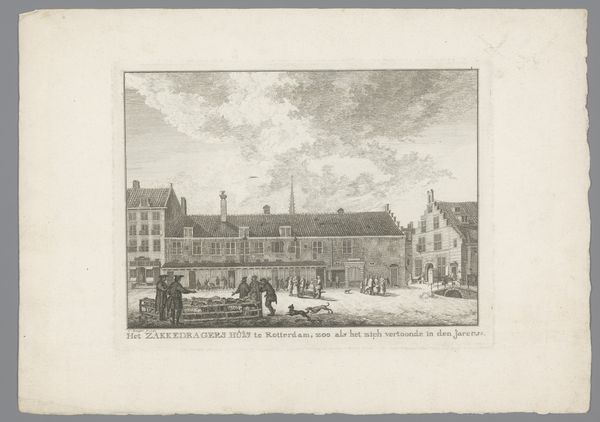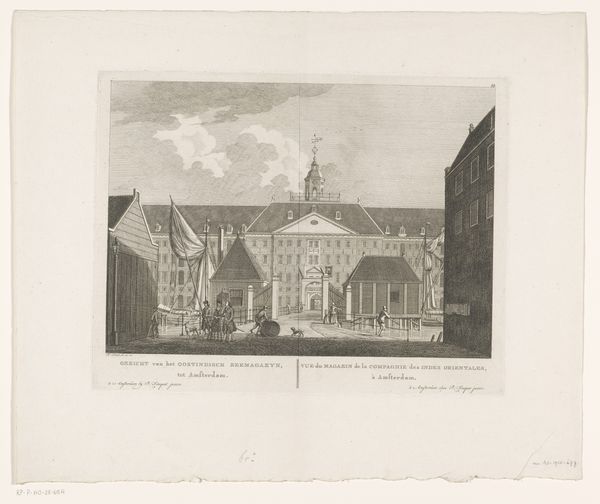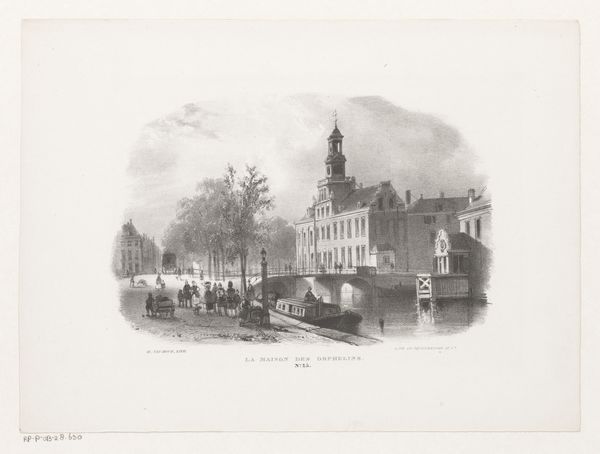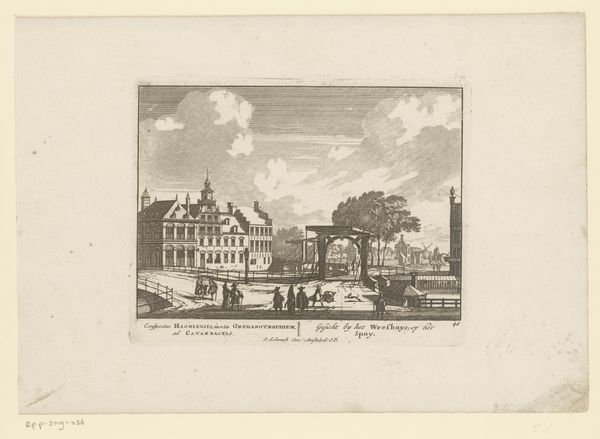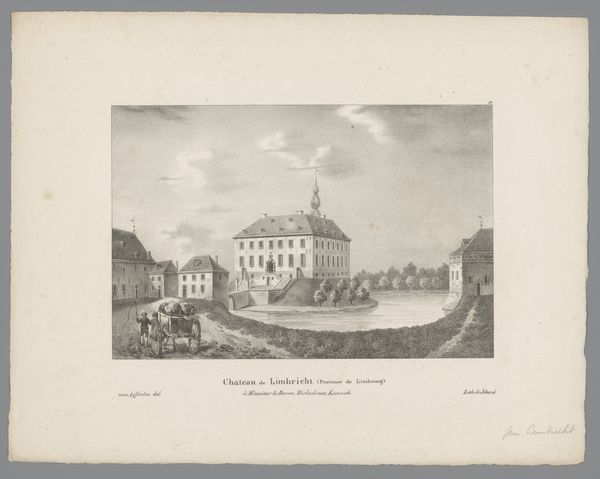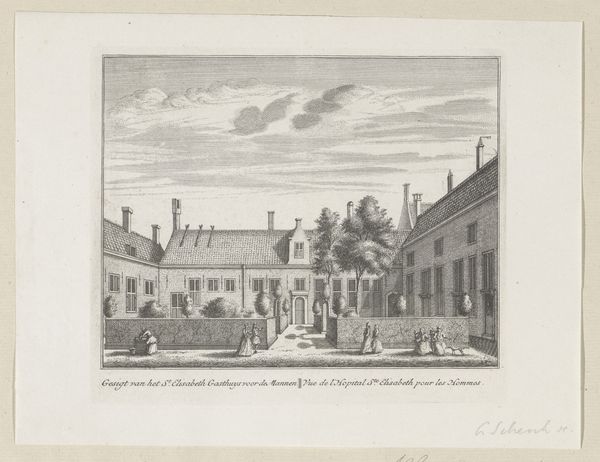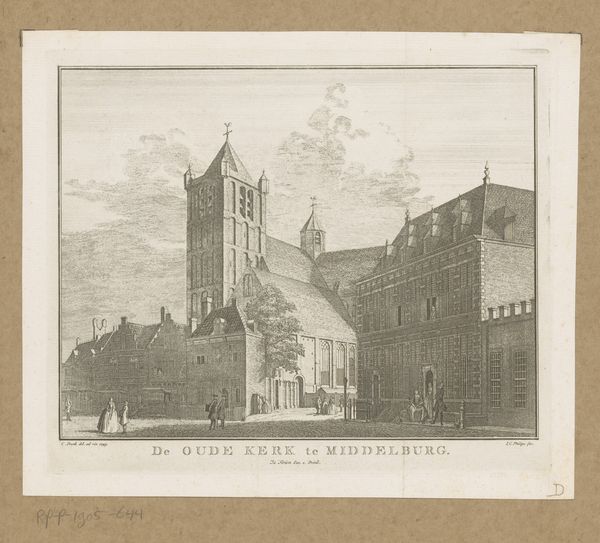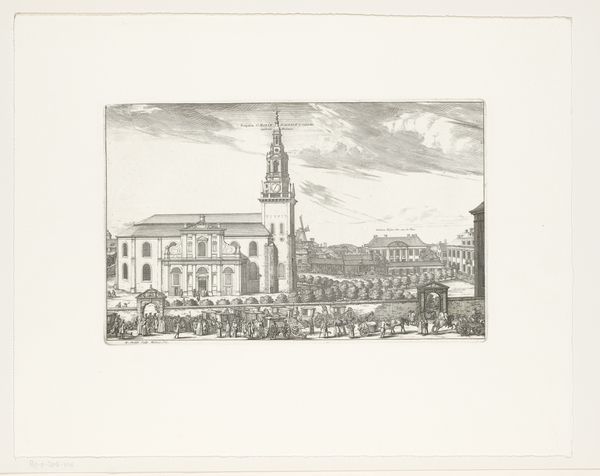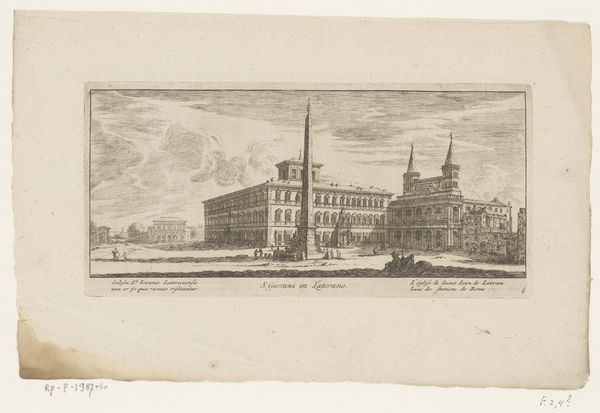
Dimensions: height 237 mm, width 325 mm
Copyright: Rijks Museum: Open Domain
This lithograph of the Kanongieterij in The Hague, or cannon foundry, was made by Huib van Hove sometime in the mid-19th century. It shows us the public role of art in the Netherlands. This factory, whose cannons would serve the military interests of the Dutch state, is here made visible as a functioning institution. The image creates meaning through the visual codes of classical architecture, which would associate the factory with the values of reason and order. The foundry is not shown belching smoke, as it surely did. Instead, the puffs of smoke rising from the chimneys at the left blend seamlessly into the cloudy sky. The artist’s choice to represent it through printmaking, a relatively democratic medium, suggests that the artist sought to legitimize it in the eyes of a broad public. Art historians can research the history of this institution to understand how state power intersects with artistic representation. We must ask ourselves, what are the politics of this image?
Comments
No comments
Be the first to comment and join the conversation on the ultimate creative platform.
